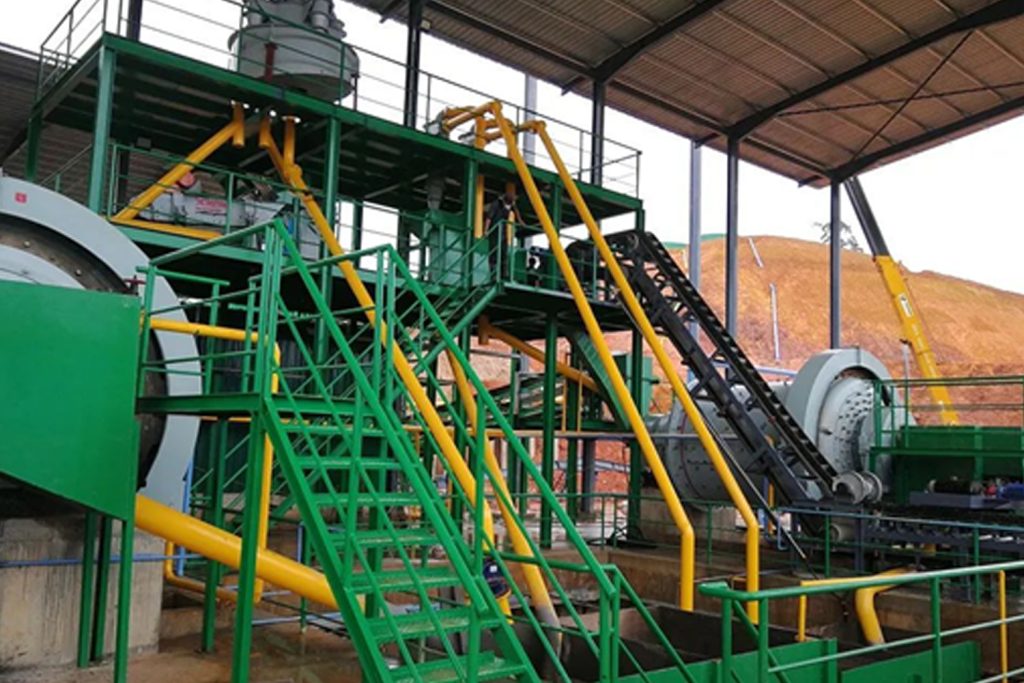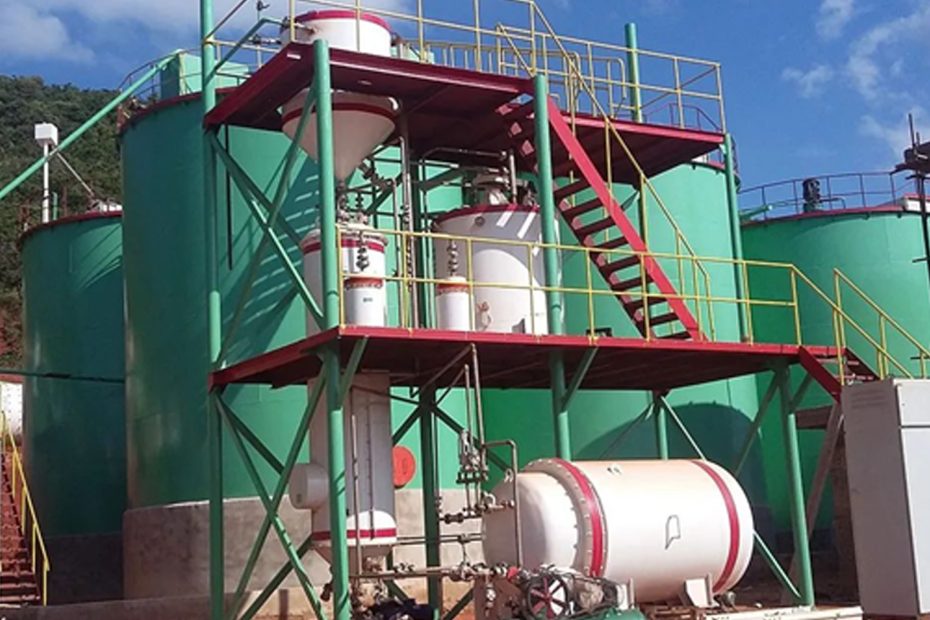The whole mud cyanidation gold extraction process is one of the important process methods for gold extraction. With the continuous development and maturity of technology, the all-slime cyanidation gold extraction method is becoming more and more popular in the majority of 4 gold ore concentrators. The gold ore all-slime cyanidation process can be divided into six stages: crushing and screening, grinding and gravity separation, secondary classification, chip removal and pulping, cyanide leaching and desorption electrolysis.
Six stages of gold ore cyanidation mineral processing
Gold mine two-section one closed-circuit crushing and screening operation
The raw gold ore enters the jaw crusher through the feeder for coarse crushing. Coarsely crushed products enter the vibrating screen for screening under the transport of the belt conveyor. The ore particles that meet the requirements enter the powder silo for storage.
The unqualified ore particles are returned to the cone crusher for re-crushing. Afterwards, the ore discharge of the cone crusher and the discharge ore of the jaw crusher enter the screening machine together for processing. Such two-stage-one-closed-circuit crushing and screening operation can reduce over-crushing of ore and improve the working efficiency of the crusher, and at the same time, it can separate useful minerals and gangue minerals as much as possible.
Gold ore grinding and gravity separation operations
The materials stored in the powder silo go through the screw conveyor into the grid type ball mill for grinding, and part of the products after grinding have realized the monomer dissociation of concentrate and gangue minerals. In order to avoid the waste of materials caused by over-grinding, some gold ore particles can be sorted out in advance by using the combined gravity separation process.
The product after grinding enters the jig machine for a re-election. The overflow part enters the pump box for storage. The underflow part is pumped into the shaker by the slurry pump for second to third gravity separation to obtain gold particles. The remaining pulp is pumped into the desliming hopper by the slurry pump for washing.
Secondary classification of gold mines
The underflow product from the desilting hopper enters the pump box together with the overflow part of the jig for storage, and then enters the hydrocyclone for a grading operation. The overflow part is pumped into the hydrocyclone group for secondary classification.
Both the hydrocyclone and the underflow part of the hydrocyclone group will return to the ball mill for regrinding, the former enters the grid type ball mill and the latter enters the overflow type ball mill for grinding.
Descaling and pulping operation of gold mine
At this stage, there are still some sawdust impurities in the pulp. In order to prevent these impurities from affecting the leaching effect, it is necessary to use a debris removal screen for pulp treatment. The pulping operation is mainly carried out in the thickener.
In order to meet the cyanidation reaction conditions, the concentration of the pulp should be controlled at 35%-38%, and the pH value should be kept at 10-11 as the best. In actual production, the pulp concentration needs to be controlled by the flow rate at the bottom of the thickener and the amount of flocculant added. As for the adjustment of the pH value, the amount of lime in the raw ore and sodium hydroxide in the thickener can be adjusted.

Cyanide leaching of gold ore
The slurry flowing out from the bottom of the thickener is pumped into the leaching tank by the slurry pump for pre-soaking. The prepreg stage mainly controls CN-concentration, oxygen content and inflation pressure. By adjusting each air valve, it is more appropriate to uniformly disperse bubbles with a diameter of about 5-10mm on the surface of the pulp. This process can be realized by air compressor.
After the pre-leaching operation, it is necessary to carry out the activated carbon countercurrent adsorption stage of the pulp, that is, the adsorption operation while leaching. This stage requires the use of multiple leaching tanks to complete the carbon addition, stringing and extraction of activated carbon. After the operation of the charcoal extractor, the leached pulp flows in the opposite direction to the original pulp, and the cyanide leaching operation of the pulp is completed.
Desorption electrolysis of leaching solution
The desorption operation of gold ore is mainly carried out in the desorption column. During desorption, the washed gold-loaded carbon will be loaded into the desorption column, and then the aqueous solution of NaCN and NaOH will be added to submerge the carbon layer. Under pressurized or normal pressure, use an electric heater to heat the desorption column to 90°C~95°C. After a period of desorption, gold-rich desorption solution and desorption carbon can be obtained.
The method of recovering gold from gold-rich desorption solution is mainly electrolysis. The desorption solution enters the electrolytic cell for electrolysis to obtain gold mud. The desorption carbon can be reused by adding a certain proportion of new activated carbon after regeneration.
In summary
The above are the six stages of the gold ore all-slime cyanidation process. When designing the all-slime cyanidation process, the above content is for reference only. The specific process flow, process parameters and equipment layout need to be formulated according to the optional test results of the ore, so that a safe and reliable gold mine production process can be designed to ensure The productivity of the concentrator.
